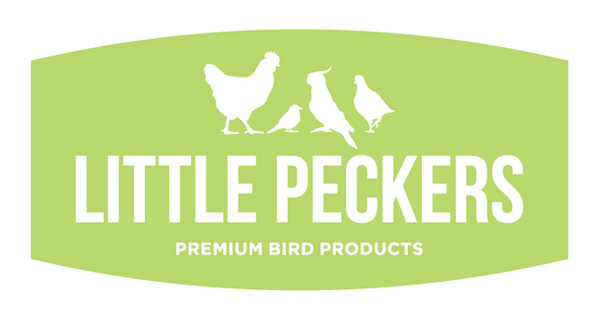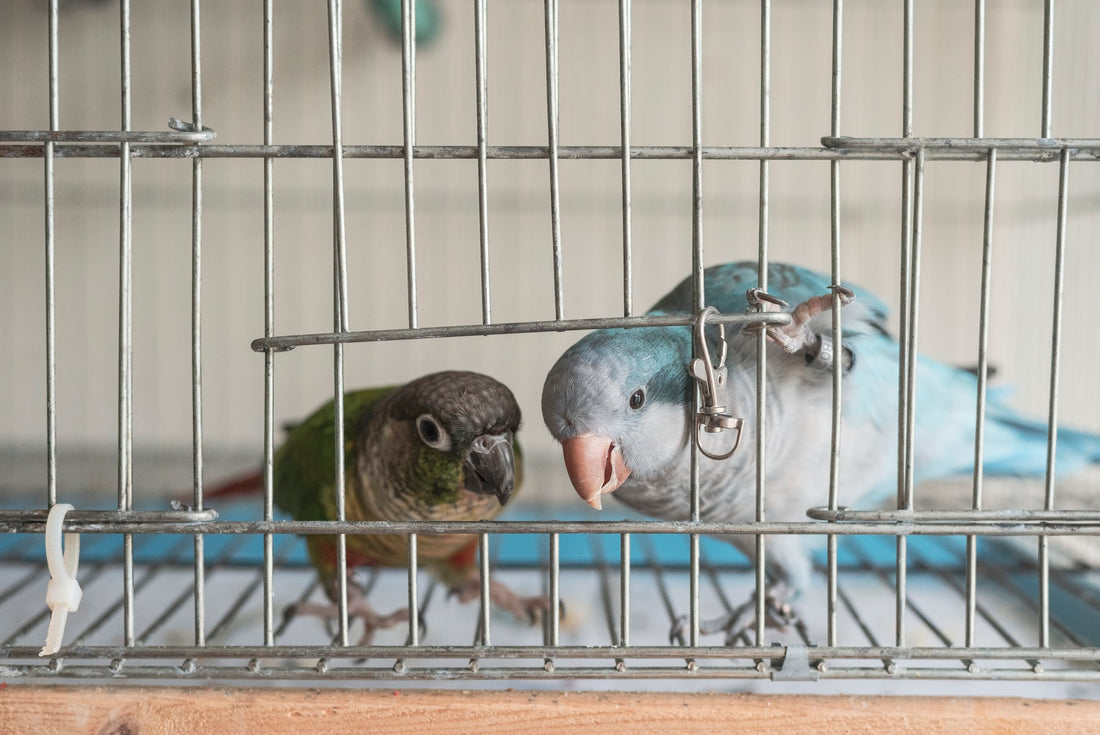Colourful, bright and sociable, parrots can make excellent pets. If you’re thinking of buying a pet parrot, and you’re keen to know everything there is to know about these magnificent creatures, here’s an informative guide.
Types of parrots
There are many different types of parrots, and some are much better suited to life in cages, aviaries and homes than others. Parrots have been kept as pets for hundreds of years, but they are not always the easiest of companions. This is why it’s crucial to ensure you choose the right parrot breeds. Here are some of the most popular pet parrot breeds:
African Grey
one of the most well-known species of parrot, the African Grey is a small, grey parrot, which is characterised by a flash of vivid, red feathers on the tail. Africa Grey can be very chatty and friendly, but they do need a lot of time and attention.
Senegal parrots and Meyer’s parrots
These relatively small parrots are often recommended for prospective buyers who have children, as they tend to be calmer and less demanding than their larger counterparts. Their size also makes them a suitable addition to smaller homes.
Macaws
Perhaps the most recognisable parrot species, macaws are majestic and bright. Although there are many advantages of keeping macaws, they need a vast amount of space and they can be very noisy. Macaws are usually recommended for experienced parrot owners who have access to a large, open space.
Amazons
There are several types of Amazons, including blue-fronted and yellow-winged parrots. These parrots tend to be chatty and demanding, and if they don’t get the attention they crave, they can get rowdy.
Conures
Conures are often compared to macaws, as they look like a smaller version. Their size makes them a more appealing option, especially for inexperienced parrot owners and those who don’t have space for a giant aviary. Conures can be excellent pets when cared for from a young age, and they are often recommended for children.
Cockatiels, budgerigars, lovebirds and parakeets
These small parrots are closely related to the birds mentioned above, and some make excellent pets. Cockatiels are lively and noisy, while budgerigars tend to be more sociable and affectionate. Some species of parakeet, including Australian parrots, the rosella and grass parakeet, need a lot of space and are rarely suited to life in captivity. Lovebirds travel in pairs and they can be wonderful pets.
How long do parrots live?
Parrots are known for their long lifespans, and for many pet owners, they are lifelong companions. Parrot lifespans depend on the breed and the individual bird and their health status and medical history, but you can expect some parrots to live to the grand age of 75-85 years old. Smaller parrot species, including budgerigars and conures, have much shorter lifespans, with an average life expectancy of up to 25 years. Macaws usually live for between 30 and 50 years, while cockatoos frequently reach the age of 50. There are tales of cockatoos surviving for over 80 years. African Greys are renowned for their longevity and endurance, and they usually live for up to 60 years in captivity.
Where can you buy parrots?
If you’re thinking of buying a pet parrot, you may be wondering where to find parrots for sale. There are various options available, including:
Buying from a breeder
Buying from a breeder usually means that owners have access to healthy birds that have been well cared-for from day one. Always choose reputable breeders, take time to have a look at the birds and ask questions about the parents and blood lines.
Adverts
If you’ve been looking for parrots for sale, you might have come across classified adverts or links to pages for websites or stores that sell pet parrots. Buying from an advert can be a cheaper option, but it’s crucial to tread cautiously. Don’t agree to buy a bird without seeing it first and make sure you have the means to transport your new pet home comfortably and safely.
Pet shops
Some pet shops sell species of parrots. Buying from a pet store is simple and convenient, and it also gives you the opportunity to have a look at the parrots and get to know them a little before you make a decision. When visiting pet shops, take the time to speak to assistants and find out more about the different species and individual birds, and look for shops that provide information, as well as price tags, and those that have birds that look healthy, happy and well cared-for. Try to avoid stores where birds have very little space and the assistants can’t answer questions about the parrots.
What do parrots eat?
Parrots should have a varied, balanced diet, which contains a diverse range of vegetables and fruit, as well as complete parrot food. In the wild, parrots would naturally gravitate towards fruit, vegetables, flowers, corn and seeds. As pets, parrots should have access to a range of foods, and it’s often beneficial to supplement fresh foods with pellets or a ready-made parrot food mix. Ideally, parrots should be given an array of organic produce, including bananas, asparagus, apples and peaches, broccoli, carrots, spinach, leeks and kale, in addition to seeds and pellets.
A parrot diet can be colourful and vibrant, and you may find that your parrot enjoys certain foods more than others. Parrots would forage and scour the land for tasty morsels in the wild, and it’s a good idea to make them work for their dinner in an aviary too. They will enjoy looking for treats and seeking out scraps, and you can also introduce foraged foods. Examples include blackberries, sloes and hawthorn berries.
Talking parrots
Many of us have a vision of parrots as chatty, friendly pets that repeat words all the time and engage in conversation freely. While some parrots are proficient in talking and learning new words, not all parrots are sociable and talkative. African Greys are widely regarded as the best talkers in the parrot family, and if they are taught from an early age, they can develop an expansive vocabulary. Parrots tend to pick up individual words and short phrases that are repeated to them, or terms they hear in general conversation on a regular basis. It’s relatively easy to teach an African Grey to say hello and goodbye, for example, and you may find that they catch you by surprise by asking if you’d like a cup of tea or bidding you goodnight by telling you to ‘sleep tight.’ Some parrots are believed to have a vocabulary of more than 1,000 words, while others will do nothing but sing, shriek or call. If you are desperate to have a pet parrot to sit and chat to, it’s best to opt for an African Grey or an Amazon parrot.
Parrot names
Many of us take great joy and pleasure in naming our pets. If you’re looking for inspiration for your baby parrot, here are some of the most popular monikers in the UK:
- Polly
- Paco
- Paul
- Yogi
- Coco
- Bill
- Tony
- Max
- Buddy
- Pearl
- Tara
- Peter
- Lucky
- Penny
- Blondie
- Ivy
- Belle
- Honey
Fun parrot facts
Parrots are fascinating species. Before you decide whether or not to add a pet parrot to your family, have a look at these fun facts:
- There are over 370 different species of parrot
- Most parrots are native to tropical areas
- Parrots are characterised by their curved beaks, sharp claws and strong, sturdy legs
- Parrots are believed to be one of the most intelligent bird species
- Many species of parrots are brightly-coloured, with vivid feathers in shades of blue, green, yellow, red and orange
- Parrots have a varied diet, consisting of all kinds of fruit and vegetables, seeds and nuts
- Some parrots live for over 75 years. The oldest cockatoo on record, Cookie the Cockatoo, died in 2016 at the age of 82.
- Parrots are the 4th most popular pet in the US, behind dogs, cats and fish
- Parrot feet are configured in two sets of two toes for maximum stability. This differs to most birds, which have three toes in front and one behind.
- Parrot beaks are capable of cracking some of the hardest nuts in the world
- Parrots use the roofs of their mouth to taste
- Parrot feathers are not just visually striking and beautiful. They are also fitted with a special defence mechanism in the form of pigments, which have antibacterial properties.
Tips for finding the right pet parrot
Before you decide which type of parrot to buy, it’s essential to explore the options and consider these key factors:
- How much space you have available
- How tolerant you and your neighbours are to noise
- What kind of pet you want to have
- How much time you have to devote to your feathered friend
- Who you live with: it’s particularly important to consider the type of parrot carefully if you have children or other pets?
- How much you want to spend: some parrots are much more expensive than others
Summary
Parrots are striking, intriguing, vivacious animals, which can make excellent pets. If you’re searching for parrots for sale, or you’re thinking about adding a pet parrot to your brood, it’s critical to do your research to find out more about different parrot species and make sure your home is a suitable place to raise a parrot.

